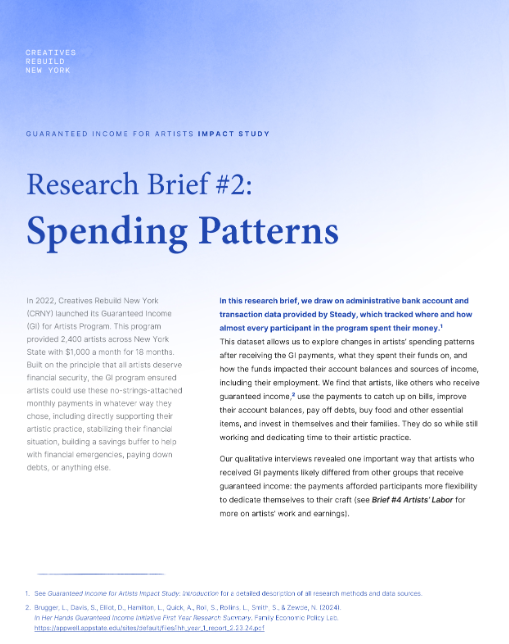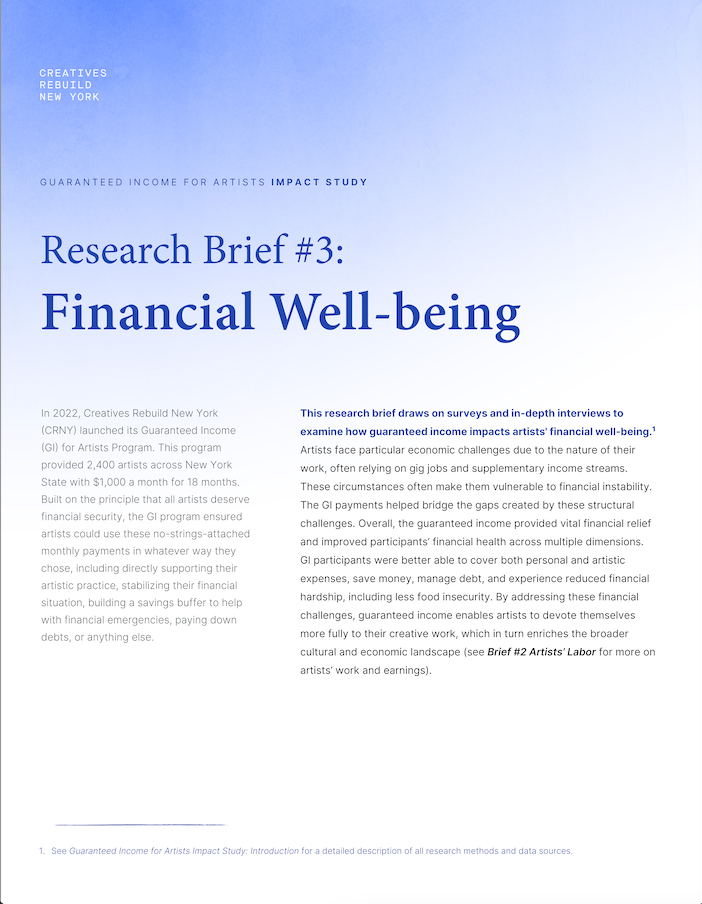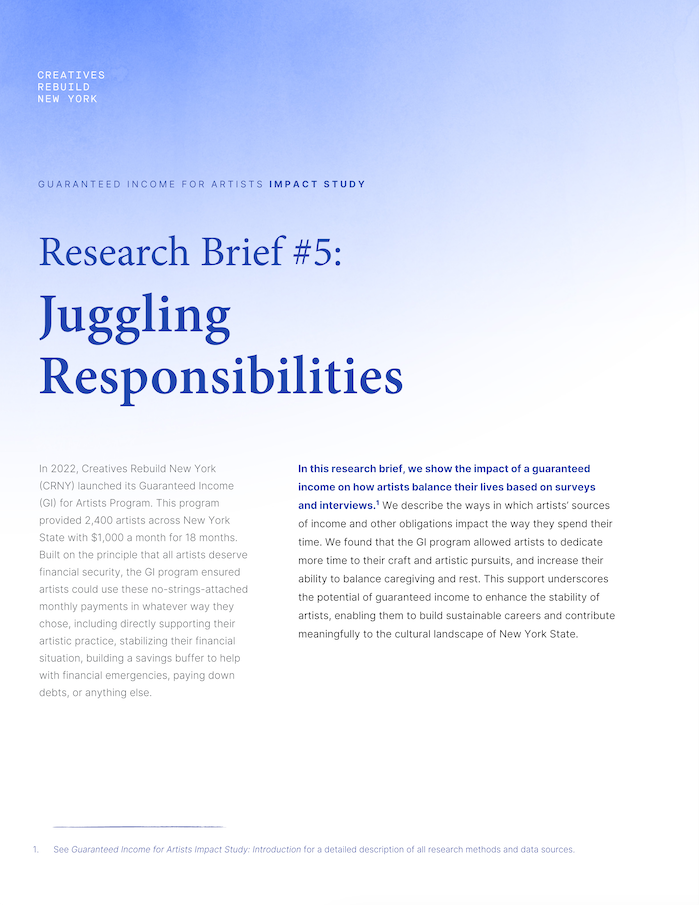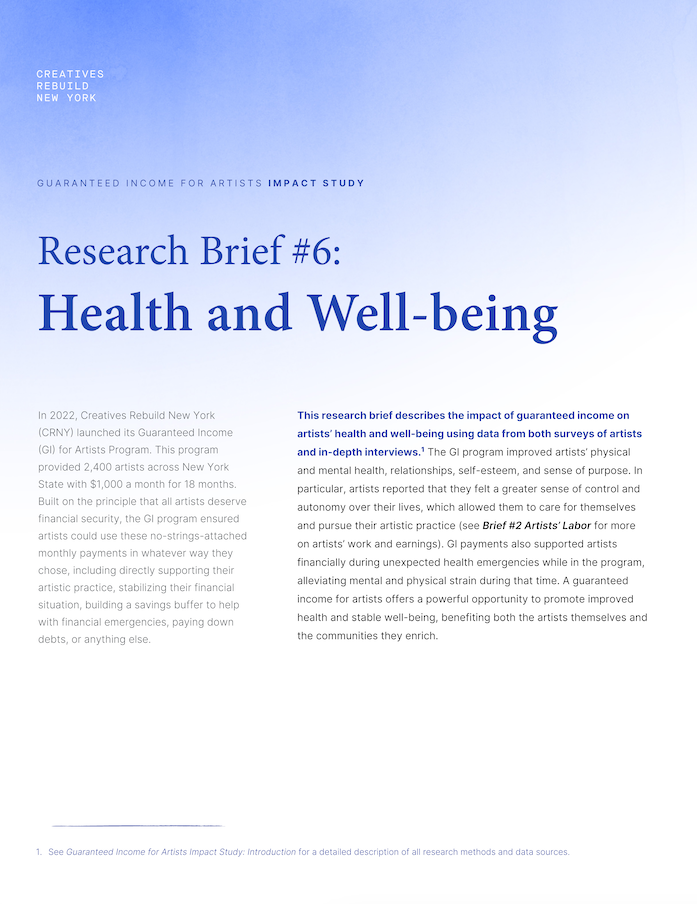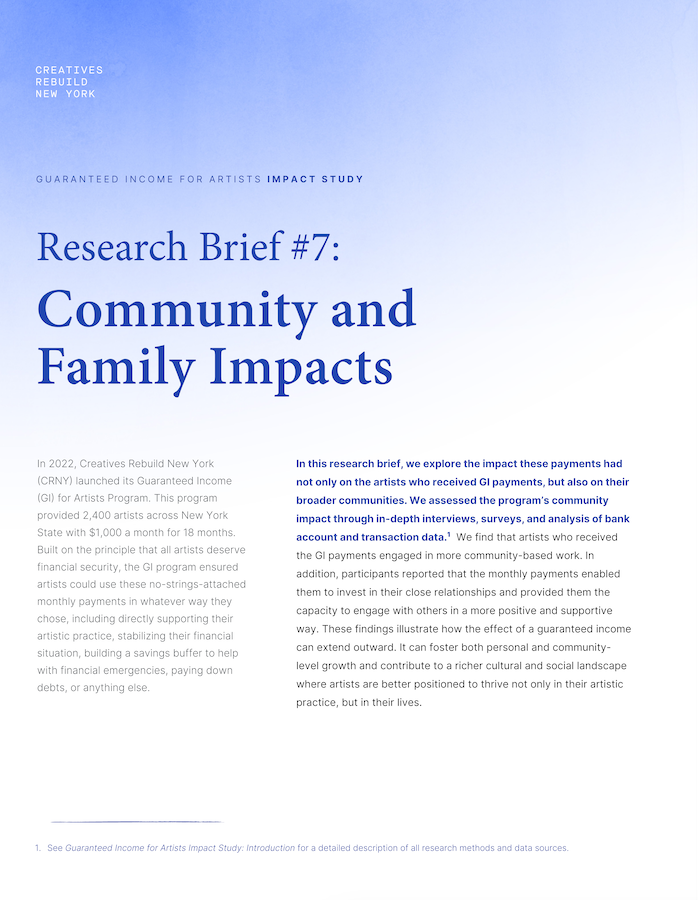The Guaranteed Income for Artists Impact Study was a multidisciplinary, collaborative research effort to document and assess the impact of guaranteed income payments on artists’ lives and livelihoods. The study reveals the profound benefits of guaranteed income on artists’ financial stability, creative output, and overall well-being—offering critical insights for funders, policymakers, and advocates in the cash transfer space.
Creatives Rebuild New York selected two research teams to evaluate our Guaranteed Income for Artists program: one led by the Indiana University Center for Cultural Affairs, and the other led by the Family Economic Policy Lab at Appalachian State University in collaboration with the Cash Transfer Lab at New York University, Center for Social Development at Washington University in St. Louis, and City University of New York. This dual approach was strategic and intentional, ensuring multidisciplinary analyses and a range of research outputs that can reach the diverse fields of practice engaged in the guaranteed income movement.
These research partners collaborated on a mixed-methods evaluation that included an artist advisory group that provided input on the research design, a comprehensive quantitative survey, analysis of spending data, qualitative interviews and focus groups, collaboration with interview participants to transform their narratives into research poetry, and an invitation for artists to contribute a “creative expression”—any form of art that reflected their personal experiences with the guaranteed income program.
The findings are presented through seven research briefs that explore key themes: demographics of artists, spending patterns, financial well-being, artists’ labor, juggling responsibilities, health and well-being, and community/family impacts. The introduction includes a summary of findings, a detailed description of data collection and analytical methods, and an introduction to the scholars and research institutions involved.
Each of the seven briefs below offers data-driven lessons about New York State artists and the impacts of the GI program. As a whole, the Guaranteed Income for Artists Impact Study underscores the transformative potential of cash transfer programs tailored to specific populations such as artists.
This research highlights what many of our allies advocating for cash policy have already identified: that guaranteed income works. We hope that these findings and the powerful stories from our artists will fuel the efforts of the advocates and policymakers working to realize guaranteed income for artists and for all.
– Maura Cuffie-Peterson, Director of Strategic Initiatives, Guaranteed Income at CRNY
PDF Downloads
Key Findings
Creative Expressions
As part of the research led by Appalachian State University and its partners, artists were invited to submit a work of art in any medium that expressed their guaranteed income experience. A selection of those submissions is included here, with consent from those artists.

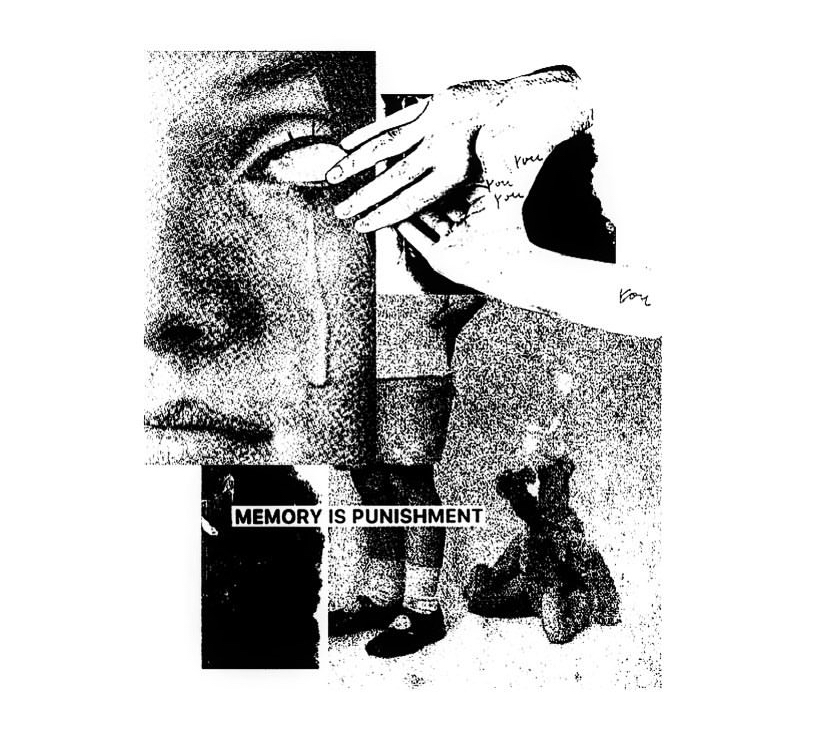
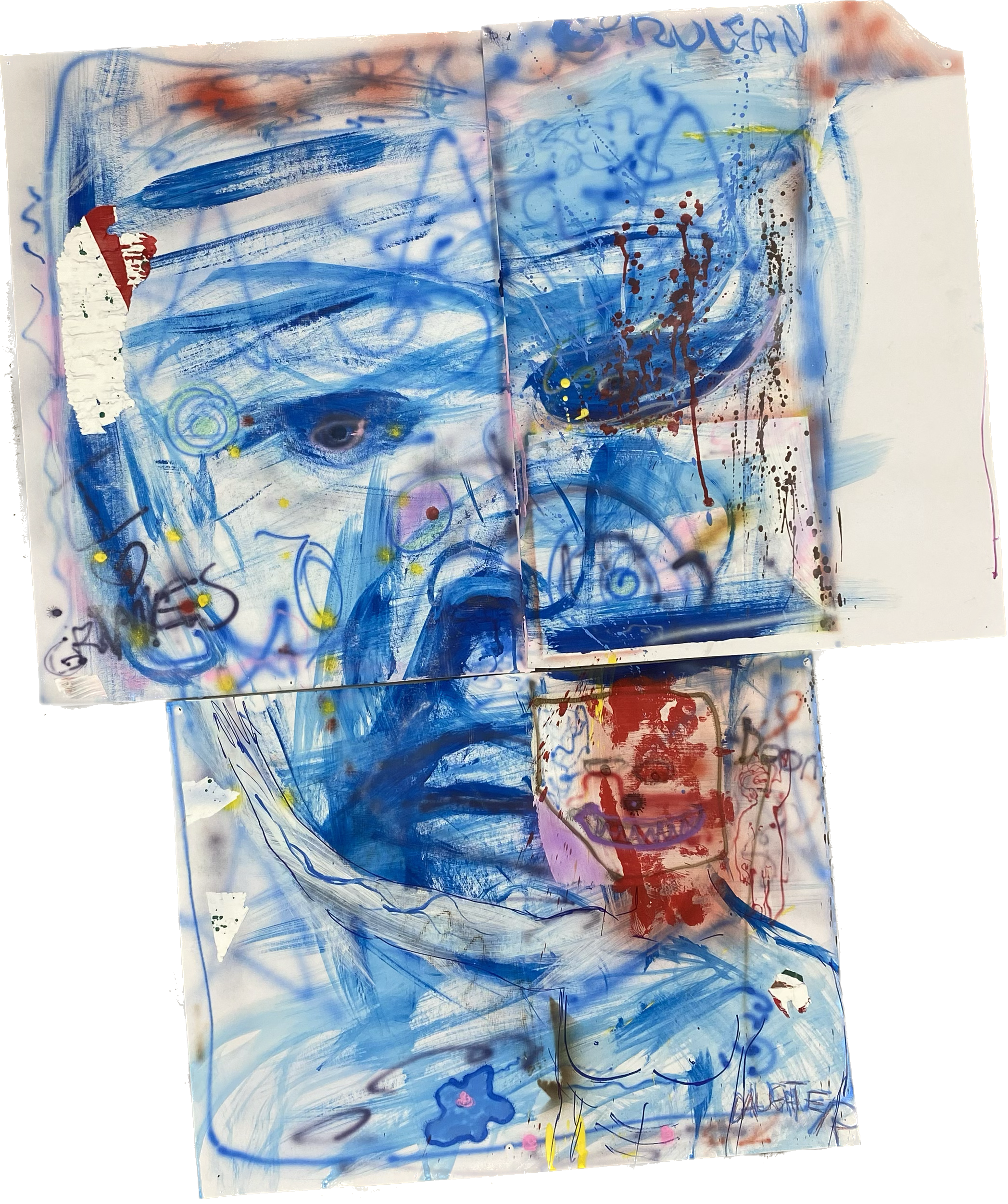
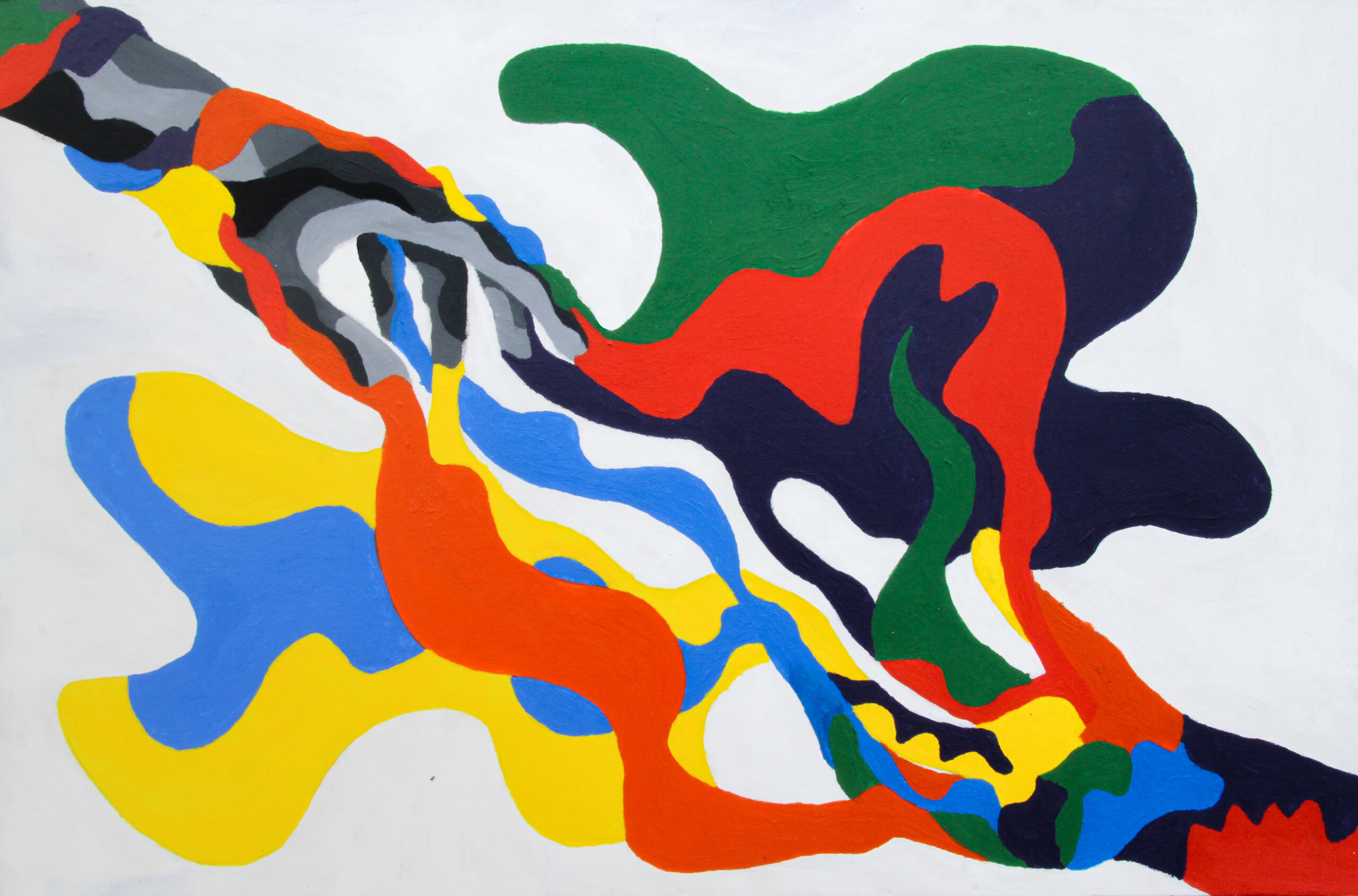








Artists' Testimonies
When you feel financially secure, you’re more empowered in your decisions—and that changes everything.
A world where basic needs are covered would allow humanity to evolve. Without worrying about survival, people could create things that change the world.
With the fears of the world and making ends meet, people sacrifice their talents for practicality. Guaranteed income could give them the space to discover their true gifts, making the world healthier and wealthier.
There's a positive correlation between resources and control. The more resources you have available for you, the more control you have over your life.
I started honoring my days off. When you rest, ideas and connections start happening.
Not to be hyperbolic, but Guaranteed Income literally saved my life. In 2022, I was behind on rent and bills despite working a full-time 9 to 5. With the added boost to my income, I was able to get ahead of my finances, build up savings, and thrive—instead of merely survive. Now I am inspired once more, instead of my mind worrying about finances.



